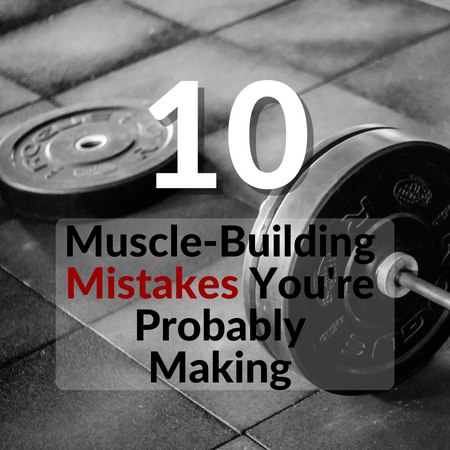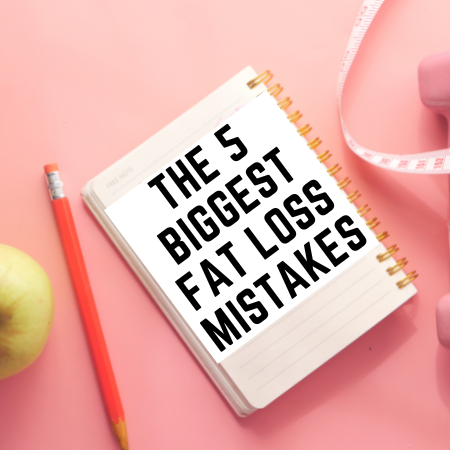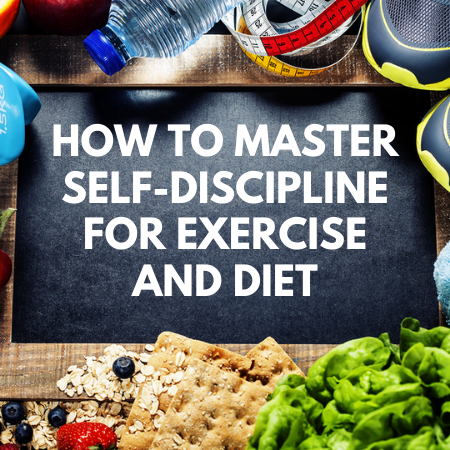
10 Muscle Building Mistakes You’re Probably Making
Everyone wants to build muscle.
Building muscle not only gives you a more aesthetically pleasing look, it also improves your overall health. Studies have shown that increased muscle mass is linked to reduced risks of hypertension, metabolic syndrome and cardiovascular diseases, among others. In addition, with increased muscle mass, you will have increased metabolism, stronger joints and tendons, improved posture and balance, and stronger bones. Furthermore, more muscle means more strength, which will help in Activities of Daily Living (ADL). And the list goes on.
However, building muscle is a challenging task for many. This is because of the misconception that you can get to the physique you want by simply going to the gym and lifting weights. Unfortunately, there is much more to effective muscle building than that. If you struggle with muscle building, make sure you’re not making any of these mistakes!

The 5 Biggest Fat Loss Mistakes
Here’s a situation I’m sure many of us faced before. You step on the scale, seeing the numbers increase daily, or look at your belly in the mirror, realizing it is forming layers and layers day after day. You tell yourself you have to do something about it, and make a resolution this year to lose weight.
You know you have to eat less and get some form of exercise on most days of the week. You follow quick fixes from the internet like crazy fad diets and bulletproof coffee. You feel good, but when you step on that scale again and look in the mirror, nothing has changed. You wonder what you’re doing wrong and by the second month, you throw in the towel and give up.
You’re not alone. In fact, a study showed that although 77% maintained their resolutions for 1 week, only 19% continued for 2 years. What makes that 19% succeed where millions have failed? They do a lot of the right things, of course. But we must first be able to recognize the mistakes we are making, correct them, and then we can be on our way to achieve our fitness goals.
Check out the 5 biggest and most common fat loss mistakes!

6 Tips on Staying Motivated
You know exercise and nutrition are good for you. It controls your weight, reduces risks of diseases, and improves your mental health and mood.
Doing it though, is another thing. In particular, overcoming the inertia to get started can be a huge first step.
But sticking to a workout and nutrition program is even harder. It takes deep, lasting, dedication, consistency and motivation. That’s why more than a third of the world’s population is overweight.
Furthermore, many think that exercise and nutrition have to be torturous, time-consuming and/or exhausting, therefore avoiding it.
Not having the right motivation coupled with the negative views of exercise and nutrition have caused millions of people to start a program only to quit halfway.
In this article, I’ll be sharing on some tips that can help you to stay motivated.

Training Pyramid of Importance
“What’s the best chest workout? Are squats better than lunges?”
Are these some questions you grapple with? You’re not alone

Nutrition Pyramid of Importance
“Is rice fattening?”
“How many cakes can I eat a week?”
“Which is the best supplement to take?”
Are these some questions that you always grapple with? I was once like that too. And I can see why.

Do you Need to Give 100% to Achieve your Fitness Goals?
“All or nothing! Give your 100% in whatever you do! Reach for the skies!” These are some quotes that many people live by. You have to go all in if you want something. You have to push yourself to the hardest to get results. You have to aim for the highest if not there’s no point even trying. Or at least really close. Sometimes it isn’t distinct in the way that people verbalize it, but it is implicit in the way they discuss it.
It seems like that’s the hype now. And I can see why. I used to feel that way too. If I want to achieve something, in this case to build muscle and lose fat, I should make sure I am doing every single thing right. If I’m serious about my fitness results, I should clock the optimum number of workouts, eat the exact number of calories, protein, fat and carbs, wake up and sleep at the same time every day, and adhere to all the things I set myself out to do. And if I don’t, I’m just not maximizing what I can do and it’ll be a huge waste.
But is this really true? Do you need to give your 100% to achieve your fitness goals? If not, how much is enough? Read on to find out more!

How Often Should You Train to Maximize Muscle Growth?
We all want to maximize our muscle growth in the shortest possible time. But we also know that if we train too often, the fatigue and soreness that kick in will not allow our body to recover in time. And this will mean muscle growth isn’t maximized in the long term.
So how do we know what’s the optimal number of times to train per week, assuming that you have the time for it? The short answer is that it depends on the individual, like any other training or nutrition recommendation that I give. The long answer? Read on to find out more! We will be looking at what an optimal frequency of training looks like, tradeoffs of higher and lower frequency, and how to reduce or increase your frequency and how to know if that works for you.

How to Lose Weight Without Counting Calories
If you’ve been following me for a while, you would know that I’m a huge advocate of counting calories in order to lose weight. However, many people can be so obsessed with calorie counting that it causes eating disorders. Others also find counting calories too time-consuming and inaccurate.
But the truth still holds - the biggest factor in diet is calories. We must be in a calorie deficit to lose weight. But how do you do so without counting calories? The answer is to eat healthier foods. This is because the second biggest factor in diet is the kinds of foods you eat. When you try to eat healthier foods, you typically tend to lower your calorie intake without noticing or barely even trying. So, if you switch up whatever you’re eating to healthier foods, you are actually killing two birds with one stone - better for your health, reducing illnesses and diseases, and eating less food in general which lowers your calorie count. Therefore, we should prioritize eating healthier food instead of just eating less.
However, when trying to eat healthily, many people focus on what not to eat. Usually diets which eliminate certain foods are diets that are just fads and are not sustainable. Instead, what they should be focusing on is knowing what to eat. And here we will be going through the things to add into your meals to lose weight without counting calories. Let’s dive in.

How to Master Self-Discipline for Exercise and Diet
Have you ever been tempted to do something for which you later feel really guilty about? Moments like these are usually due to a lack of discipline. Self-discipline is one of the strongest things to achieving your fitness goals. With strong self-discipline, you can do what you need to do in each moment without temptation or laziness getting in the way. Self-discipline forces you to say no to extra dessert, or helps you maintain a consistent workout regime to achieve your fitness goals. It empowers you to live a life that you ideally want to, helping you look better and feel better.
However, it is becoming more difficult to maintain self-discipline. But without discipline, you’re letting your life be controlled by your emotions, which may not be what you are seeking for. Remember from my previous post that discipline and willpower is finite, and will be exhausted throughout the day. But how do you develop good self-discipline? Read on to find out!

How to combine Cardio into your Lifting Routine
If you’ve been following me for a while, you’ll probably know I always emphasize the importance of lifting weights. It is not the only way to gain muscle, it also helps you to lose weight sustainably through increased metabolism, reduce injuries, diseases, illnesses, improve posture, balance, and sleep, and gives you stronger bones for longevity, to name a few. On the other hand, cardio has its great benefits as well - it burns calories, help in cardiovascular health, improves mood, and has also shown to be highly correlated to reduced diseases and illnesses too.
So this article is not to compare which one is better, because they are used for different goals, but how do we best combine the two. But first, we will look at how they’re different, the tradeoffs, and finally what types of cardio, how much cardio, and when to do them to help with your goals. Let’s dive in.
